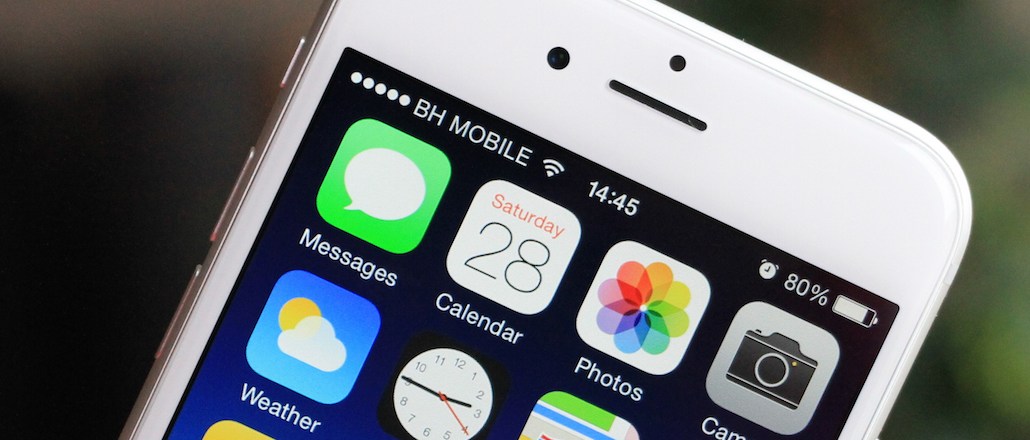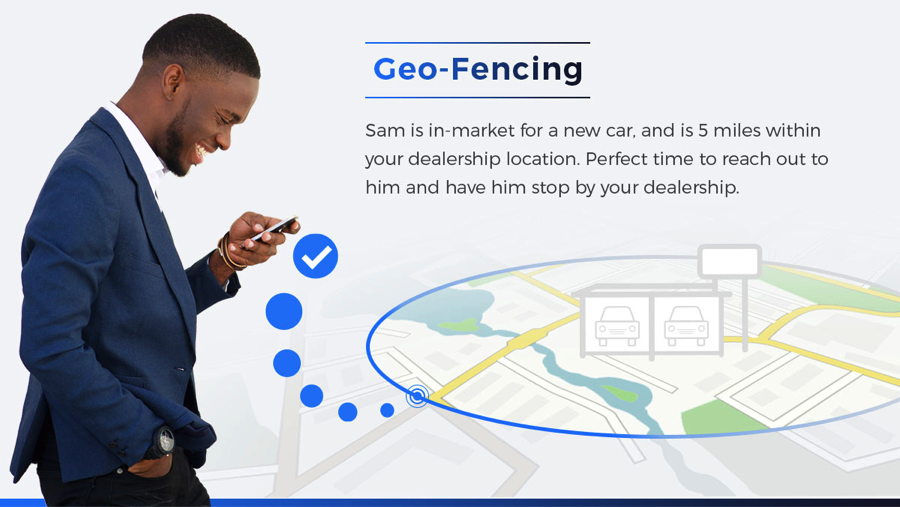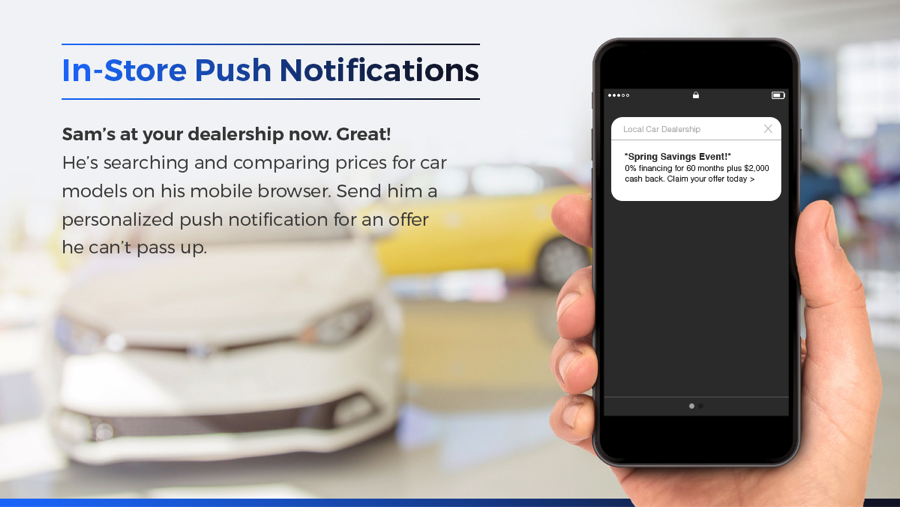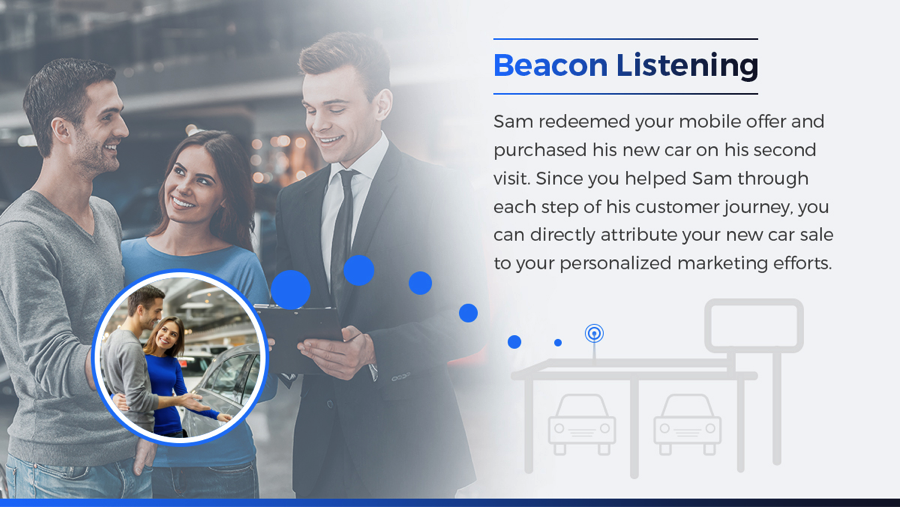
Over 52 percent of all internet activity now takes place on mobile, with nearly 90 percent of that time passing in apps alone. By 2019, mobile advertising will represent 72 percent of all US digital ad spending.
Leading brands know this and prioritize the power of mobile-first connections with their audiences. Brands that don’t will miss out on new customers, sales and engagement opportunities, as well as quickly fall behind their competition.
Mobile moments make it personal
The most powerful way to connect with your audience is in the right place at the right time, also known as mobile moments. Mobile moments are key to providing personalized customer experiences, as well as driving successful mobile marketing campaigns. Here’s how it looks when an automotive brand uses these moments to walk customers through the journey to purchase.
1. Timing is everything: Drive foot traffic to your dealership
When customers are close to a retail location, it is the perfect opportunity for brands to send them a personalized offer. Auto brands can use real-time mobile location services combined with demographic, geographic and in-market attributes—also known as geo-fencing—to reach individuals while they are in close proximity to their dealership locations.
With geo-fencing capabilities, brands can set a virtual “fence” within a certain radius of retail locations to target nearby prospects and drive foot traffic to their dealerships.

2. At the dealership: Make the sale
One of two car shoppers with mobile devices uses their smartphone while at the dealership. Their top search? Looking at car prices.
It’s essential for brands to understand how their consumers are interacting with mobile while at their physical retail location so that they can send in-store push notifications for personalized offers directly to their phones. In fact, consumers redeem mobile offers 10 times more frequently than they do print offers.

3. Mobile Attribution: Measure your success
Mobile allows for real-time metrics for location and sales. Beacon listening, also known as the lighthouses of mobile marketing, provide the technology to detect all nearby mobile devices within proximity of retail locations.
Not only can brands understand which individuals from their target audience entered the dealership location, but also who purchased vehicles. By identifying unique individuals and personalizing their experience through every step of the auto customer journey, brands can practice true mobile attribution.

Mobile-first data provides an accurate attribution method, helping brands better understand their consumers and build stronger campaigns.
For example, a major Audi dealership saw significant increase in car sales at their local retail location by running a hyper-targeted campaign to mobile-first audiences. Through mobile attribution, the dealership was able to directly link over 40 percent of total sales to their original mobile target audience.
To learn more about this Audi dealership’s use of mobile moments, download the full report here.
More in Marketing

How Bluesky hopes to win over publishers (and users)
Bluesky courts publishers with a simple pitch: trust and traffic.

Who are the winners and losers of Omnicom’s proposed acquisition of IPG?
While the deal’s official close is still a long way off and there may be regulatory hurdles to clear before the acquisition is complete, it’s still worth charting out who the winners and losers may be.

Holding pattern: Omnicom, IPG and the deal that’s leaving marketers on edge
How Omnicom’s proposed acquisition of IPG keeps marketers guessing.





